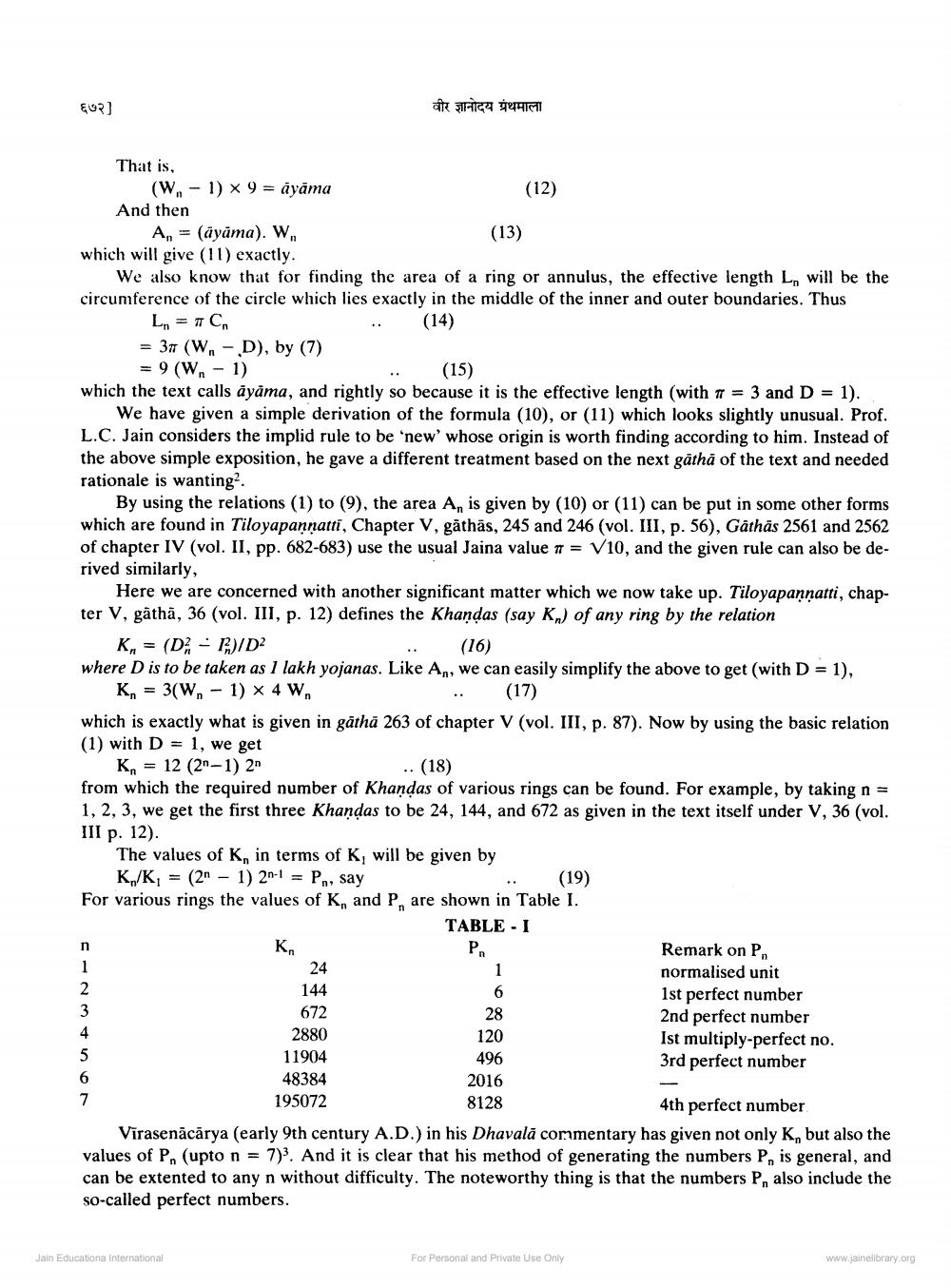________________
€92)
वीर ज्ञानोदय ग्रंथमाला
..
(16)
That is, (W. - 1) X 9 = āyāma
(12) And then A, = (ayāma). W..
(13) which will give (11) exactly.
We also know that for finding the area of a ring or annulus, the effective length L, will be the circumference of the circle which lies exactly in the middle of the inner and outer boundaries. Thus L. = 7 C
.. (14) = 37 (W.-D), by (7) = 9 (W. - 1)
(15) which the text calls āyāma, and rightly so because it is the effective length (with 7 = 3 and D = 1).
We have given a simple derivation of the formula (10), or (11) which looks slightly unusual. Prof. L.C. Jain considers the implid rule to be 'new' whose origin is worth finding according to him. Instead of the above simple exposition, he gave a different treatment based on the next gåtha of the text and needed rationale is wanting?
By using the relations (1) to (9), the area A, is given by (10) or (11) can be put in some other forms which are found in Tiloyapannatti, Chapter V, gāthās, 245 and 246 (vol. III, p. 56), Gathās 2561 and 2562 of chapter IV (vol. II, pp. 682-683) use the usual Jaina value 7 = V10, and the given rule can also be derived similarly,
Here we are concerned with another significant matter which we now take up. Tiloyapannatti, chapter V, gāthā, 36 (vol. III, p. 12) defines the Khandas (say Kn) of any ring by the relation
K, = (D2 - P.)/D2 where D is to be taken as 1 lakh yojanas. Like An, we can easily simplify the above to get (with D = 1), KA = 3(W. – 1) 4 W.
.. (17) which is exactly what is given in gātha 263 of chapter V (vol. III, p. 87). Now by using the basic relation (1) with D = 1, we get K = 12 (2n-1) 2n
.. (18) from which the required number of Khandas of various rings can be found. For example, by taking n = 1, 2, 3, we get the first three Khandas to be 24, 144, and 672 as given in the text itself under V, 36 (vol. III p. 12).
The values of K, in terms of K, will be given by K/K = (2n – 1) 2n-1 = P., say
(19) For various rings the values of K, and P. are shown in Table I.
TABLE - I
Remark on P.
normalised unit 144
1st perfect number 672
2nd perfect number 2880 120
Ist multiply-perfect no. 11904 496
3rd perfect number 48384
2016 195072 8128
4th perfect number Vīrasenācārya (early 9th century A.D.) in his Dhavală commentary has given not only K, but also the values of P. (upto n = 7)). And it is clear that his method of generating the numbers P, is general, and can be extented to any n without difficulty. The noteworthy thing is that the numbers P, also include the so-called perfect numbers.
PA
Jain Educationa international
For Personal and Private Use Only
www.jainelibrary.org




